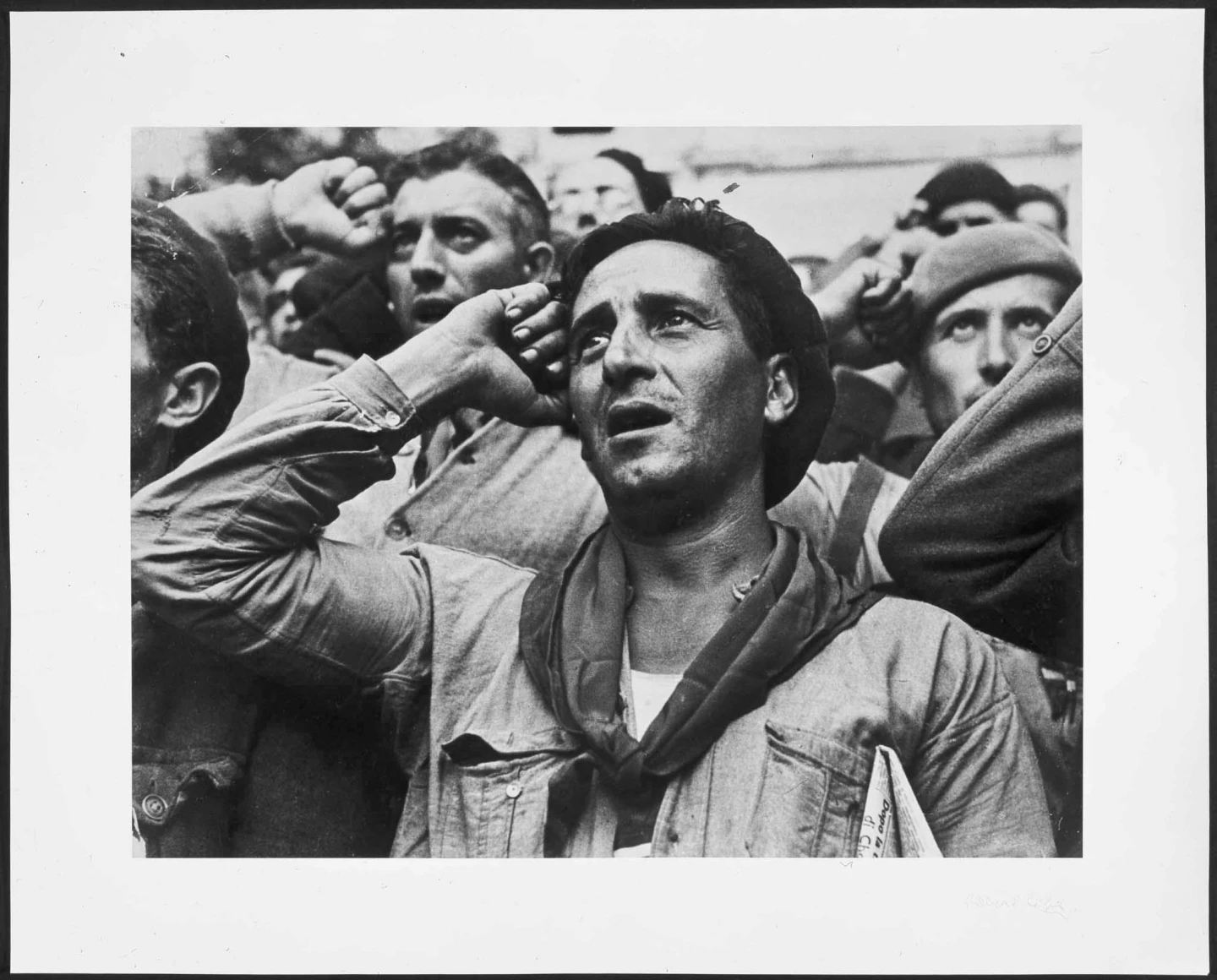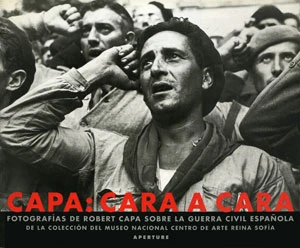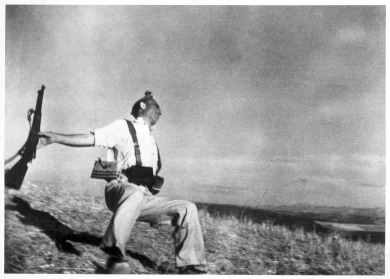Capa: cara a cara. Fotografías de Robert Capa sobre la Guerra Civil Española de la colección del Museo Nacional Centro de Arte Reina Sofía

<p></p>
During the period of the Civil War -which he covered from the Republican side- Capa converts the conflict into an absolute motive, always visible on a huge number of negatives and photographs. This exhibition presents a comprehensive set of 205 prints donated by Cornell Capa, brother of the photographer, out of nearly a thousand almost better shots taken by him during the Spanish war. In addition the twenty or so photographs from the National Historical Archive, Civil War Section, complete the display of images documenting the staging and extent of the immediate consequences of the war (destruction, death, land and air attacks, rest time, trenches and shelters, evacuation, exile).
Capa's photographs mark the beginning of a new genre of war reporting, since he captures the war first hand (in the foreground) and gives in many cases a sense of dynamism, unusual until then. Moreover, the mobility of the reporter (using a Leica 35 mm) constitutes the highest technical achievement which allows him to offer a complete image of the war, as he could place himself everywhere, as illustrated by the famous Muerte de un miliciano. Cerro Muriano, Cordoba, September 5, 1936. Secondly, because he does not limit the interest of documenting to only war but widens his lens to the limits of men and objects: boredom, fatigue, enthusiasm, will, famine and despair. In this way Capa portrays the civil side of the war (Almeria. Refugiados procedentes de Málaga February 1937). Founding a new style and a new way of understanding the reporter's work, Capa says in an interview in September 1937 that "truth is the best picture, the best propaganda." The photographer, as well as placing himself before the given objects, is able to focus on the drama of war in each of his photos, which function as a trigger, activating a sustained reading in symbolic implications.
Artists
Museo Extremeño e Iberoamericano MEIAC, Badajoz (September - November, 1999); Caracas, Venezuela, 1999; Museo Rufino Tamayo, Mexico City, 1999; Magyar Nemzeti Galeria, Budapest (March 21 - May 20, 2002)
Organised by
Museo Nacional Centro de Arte Reina Sofía
Image gallery


